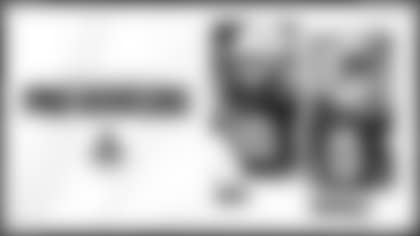It wasn't that long ago when teams were looking for six different types of defenders and eight offensive positions.
Defensive tackles were defensive tackles, linebackers were either inside or outside guys, and defensive backs were corners or safeties. On offense, a left tackle was different than a right tackle, but guards were guards, and a tight end was a tight end.
Situation substitutions, multiple personnel groupings, fire-zone blitz schemes, two-gapping 3-4 defenses, 4-3 one-gap penetrating fronts, and a host of other nuances in the modern game has changed the number of positions teams have to identify, and then locate the talent to play those positions. NFL personnel people probably have closer to 16 offensive and 19 defensive positions to identify.
For example, take a look at the running backs in this draft. Teams are breaking down the old-fashion running backs into close to seven categories.
Is the guy a "bell-cow" back, which means he can play in every down-and-distance situation? Is he a "third-down" back who comes in for passing situations and understands protections? Or is he a "matchup" back who is going to motion out of the backfield and run a route against an inferior defender? Does the defense treat him like a receiver and sub in a dime defensive back for a linebacker when the "matchup" back trots on the field? Does that substitution by the defense tell the offense to run the ball?
What about the "short-yardage" back for goal-line and short-yardage packages? When he comes in the game, is it time for an extra linebacker? Of course, there is the fullback, but is he a blocking back or a West Coast fullback? Then there's the H-back, who occasionally lines up like a tight end, but could as easily be in the backfield.
Tight ends can be "in-line" types, which means they line up next to the tackle and establish the off-tackle run. They can be a "move" tight end, which means they motion around to create different formations and are more adept at blocking safeties for the run game. How about the "hybrid" tight end, who is supposed to be a matchup nightmare for the defense. He lines up wide like a receiver and is expected to defeat safety coverage, and if the player is really good he beats a corner in the red zone.
There's no chance a wide receiver is just a wide receiver anymore. Teams are looking for "X" receivers who are preferably tall and physical to play on the line of scrimmage and look more like NBA small forwards. "Z" receivers work off the line of scrimmage, use some motion, run a reverse, maybe are able to throw a pass or two and have plenty of speed to get deep. No team could go into the draft without knowing who the "slot" receivers are because they control the short passing game and keep the coverage off the big "X" receiver.
The defense needs left ends, right ends, designated pass rushers, tweeners, two-gap tackles, one-gap tackles, three-techniques, space-eaters, "Mike, Will and Sam" backers, "plug" backers, 3-4 outside backers, man corners, cover-two corners, strong safeties, free safeties, nickel backs, dime backs, and a hybrid defensive end who can play linebacker or defensvie end when the coach wants to switch from a 4-3 to a 3-4.
In the old days, players went both ways. The center was the middle linebacker. Then platoon football came around, and the offense and defense had their own players. Then came the modern game, which has more moving parts than a chess game. After the coaches and personnel people sort everyone into one of the 35 to 40 positions that the modern game calls for, then they have to decide if they have a package for the skill sets identified.
On the day of the draft, no team is going to yell out that they need a tight end or a linebacker. Someone might ask if there's an "in-line" tight end on the board or a cover-two "Mike" backer.
There are no broad strokes in the game played in 2008.
Getting in position:
Examples of players in this year's draft who fit the specialized positions NFL scouts look for:
| Position | Player | School |
| Bell-cow back | Darren McFadden | Arkansas |
| Third-down back | Steve Slaton | West Virginia |
| Matchup back | Chris Johnson | East Carolina |
| Short-yardage back | Jacob Hester | LSU |
| Fullback | Owen Schmidt | West Virginia |
| In-line TE | Craig Stevens | California |
| Move TE | Jacob Tamme | Kentucky |
| Hybrid TE | Martin Rucker | Missouri |
| X-receiver | Limas Sweed | Texas |
| Z-receiver | Devin Thomas | Michigan St. |
| Slot receiver | Dexter Jackson | Appalachian St. |











































